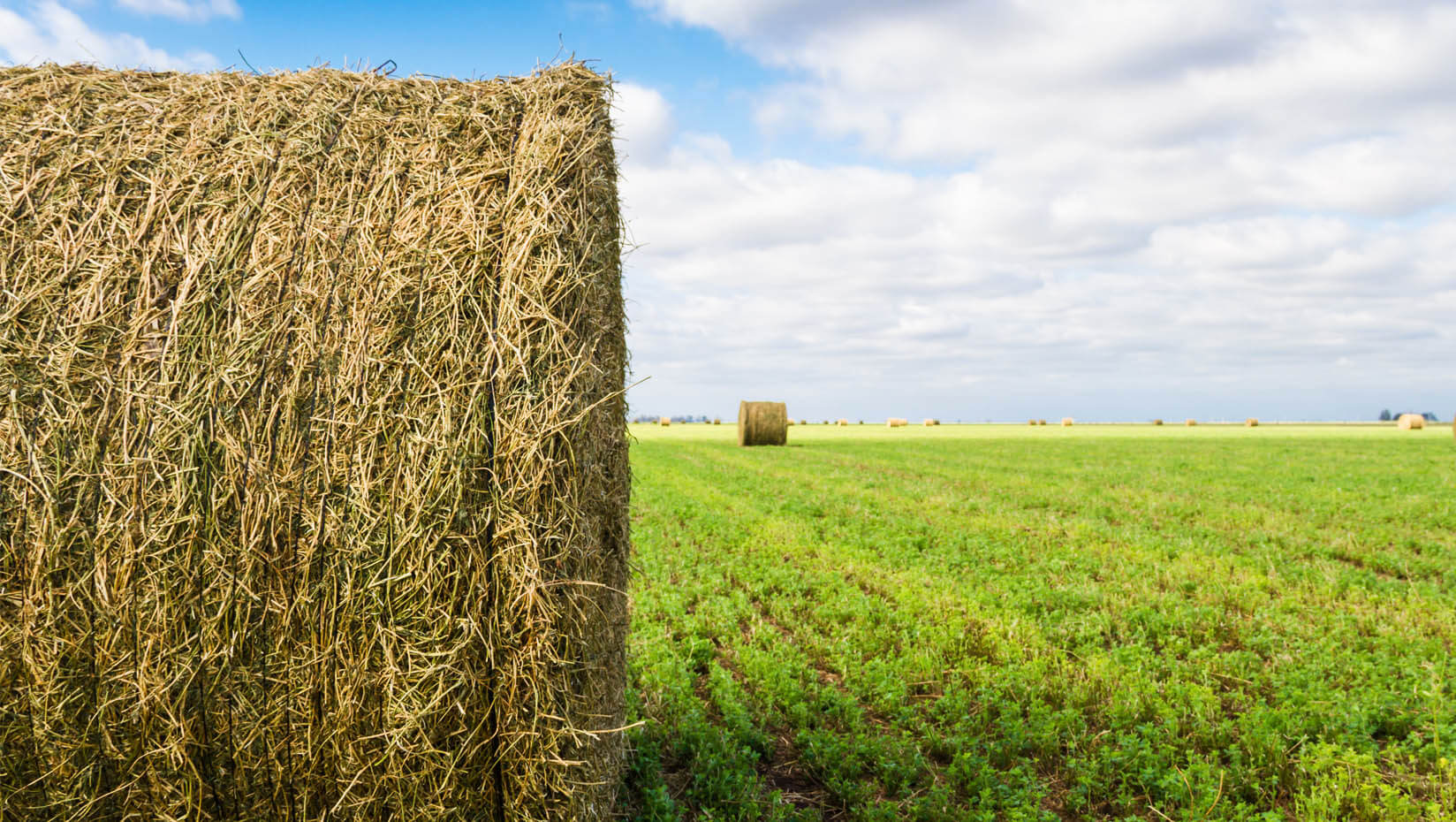
USDA NIFA awards $668K to UMaine researchers studying hay spoilage in alfalfa relative to grasses
The U.S. Department of Agriculture (USDA) National Institute of Food and Agriculture (NIFA) has awarded $668,456 to a team of University of Maine researchers studying new ways to reduce spoilage in high-moisture hay, and how spoilage processes differ in alfalfa relative to grass hays.
The spoilage of stored hay bales is a costly issue for U.S. farmers, especially in areas like the Northeast and North central regions where unpredictable weather during the hay wilting process can lead to unexpectedly moist baling conditions. Storing hay at high moisture levels decreases its nutritional value and increases the risk of mold. In the U.S., over $3 billion is lost every year to hay spoilage.
This is especially true of legume hay, like alfalfa. Legume hay is desirable for farmers because it typically has a higher nutritive value than grasses due to their higher protein and pectin concentrations and higher rate of fiber digestion. Alfalfa alone represents half of the hay production in the United States. Moreover, legumes fix atmospheric nitrogen into the soil, reducing fertilizer costs and increasing soil health.
However, a previous UMaine study showed that legume hay like alfalfa is less responsive to preservative treatments that prevent spoilage in high moisture conditions than their less-nutritious grass hay counterparts.
Certain preservatives like propionic acid, and its buffered salts, have been shown to be more helpful than others to keep high-moisture hay mold-free. This grant will allow the researchers to evaluate the efficacy of propionic acid and its buffered salts at preserving nutrients during the storage of alfalfa and grass hay and compare its effectiveness against other treatments.
As part of this project, Andre Brito at the University of New Hampshire will also evaluate preservation approaches for producers that cannot apply chemical preservatives, such as organic farms. Project collaborators Luiz Ferraretto at the University of Wisconsin-Madison and Juan Alvez at the University of Vermont will conduct activities through their cooperative extensions to improve awareness of the consequences of hay spoilage.
“This project is based on years of collaboration to expand our understanding of hay spoilage,” says Juan Romero, UMaine associate professor of animal nutrition and one of the researchers on the team. “Depending on the year, hay is the third or fourth most valuable crop in the United States and the third in Maine. Livestock farmers in New England face increasing feed costs that reduce their profitability, but at the same time, they are losing nutrients in hay that has already been harvested due to suboptimal conditions during storage. In the eastern United States, precipitation patterns can force producers to bale hay above moisture recommendations. Under such circumstances, preservatives need to be applied.”
The researchers will also isolate, identify and study hay molds across the Northeast and North Central regions to build the first library of hay molds so novel technologies can be developed to mitigate their activity.
“By identifying the molds found spoiling hay, we can estimate the risk of mycotoxins being produced in hay and improve consistency and comparability of testing of efficacy of preservatives by developing a standard panel of fungi for trials at UMaine and elsewhere,” says Seanna Annis, associate professor of mycology and one of the researchers on the team.
Through the USDA NIFA grant, the research and extension team also aims to raise awareness on the consequences of hay spoilage and the proper utilization of preservatives to mitigate nutrient losses among alfalfa hay producers in the Northeast and North Central regions.
The award started Sept. 1, 2022, and will run through Aug. 31, 2025.
Contact: Sam Schipani, samantha.schipani@maine.edu
